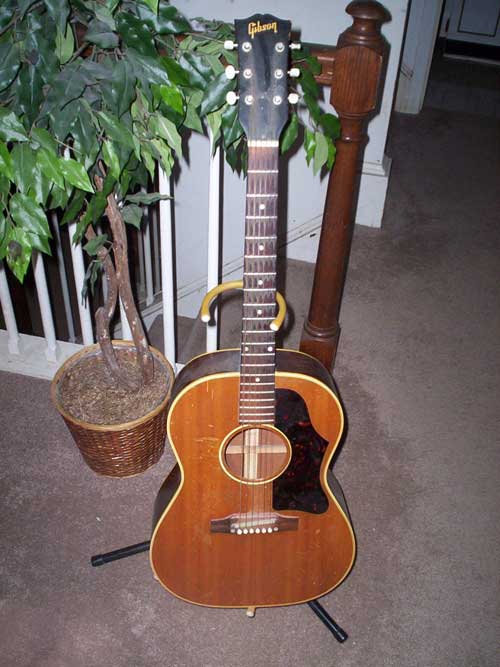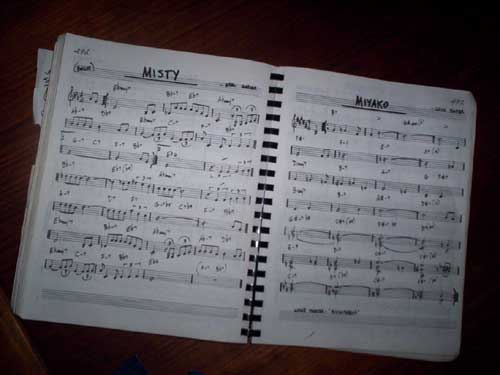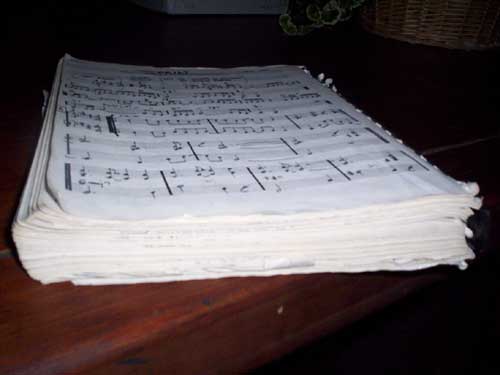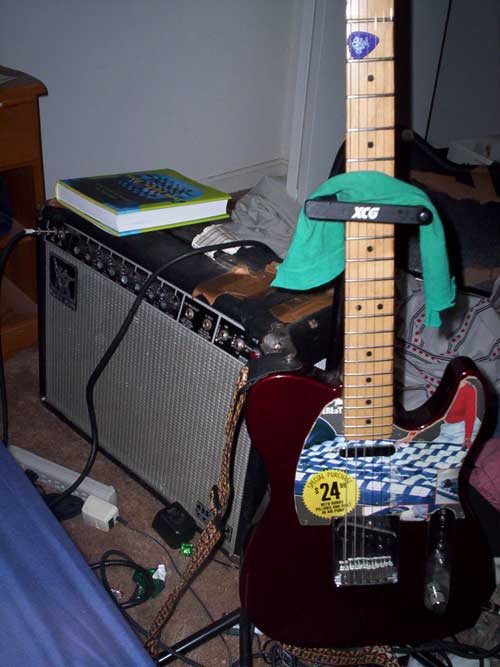Happy new year's eve, or whatever. Some of you may have noticed that my blog was down for about a day (or even that I didn't respond to email). My account on SDF (the name of the computer-cluster that hosts this blog as well as my email) was inexplicably deleted on the evening of the 29th, immediately after I said a few questionable things in an anonymous chatroom on SDF.
At around the same time as my deletion, four other users who were also in the anonymous chat room had their accounts damaged or destroyed. It seems obvious that the problems very likely had something to do with the anonymous chat room. I can think of only two possibilities:
1) our accounts were affected by a software bug somehow related the anonymous chat room. This seems odd, because others that were in it as well were unaffected. However, lately there have been serious hardward problems at SDF. But, those problems wouldn't (i don't think) select five random users and delete them. Maybe the hardware problems and buggy code in the anonymous com room combined in some way that I can't fathom.
2) the sysadmin didn't like some of the things that were said in the room, and decided he'd rather SDF do without those users. This also seems odd, for a number of reasons. This last option would also imply that the sysadmin can see the identities of chatters in the anonymous room. Certainly, the sysadmin has this capability, and it's likely that he respects the rules of anonymity that he himself created. I think.
Even if the sysadmin did purposefully delete or damage us five victims, he did so in a temporary fit of annoyance, because I later emailed him, and he emailed back telling me to re-create my account. I have difficulty believing that he doesn't want me around if he recommended that I create an account.
I emailed him again asking three things: 1) can/will I have my account upgraded to it's original level, 2) can/will my my files be restored, and 3) what happened? I got no reply, but my account was restored shortly thereafter to it's access level before deletion. However, my files were and are still gone. I can only assume that, from the sysadmin's lack of response, that they are either irretrievable or that he isn't interested in retrieving them. I also wasn't given any explanation for the deletion.
SDF's sysadmin, like a lot of sysamins, seems to operate largely on a 'need to know' principle, and doesn't like to give out information that isn't absolutely necessary. So, it's certainly possible (even likely) that my account's deletion had nothing to do with any purposeful action on anyone's part, but was just a computer screw-up upon which SDF's sysadmin feels no obligation to elaborate. It would have been nice, however, to have received an email like 'sorry about your files -- I can't recover them', 'yeah, the ud87hd server boot-drive scrotum death 878_++ mechanism fouled up, and deleted your files. Sorry' or even 'i don't owe you any information. Fuck off.' I guess no response at all is pretty much equivalent to this last option. The sysadmin's being so reluctant to communicate sort of engenders what I call 'root paranoia'.
'Root paranoia' is the tendency of users on a system to suspect the root, sysadmin, or superuser -- the all-powerful user account -- of being responsible for things that s/he is in fact not responsible for, and that are merely the result of program bugs, hardware failures or malicious actions by other users. Root paranoia is common on SDF, and I imagine that it is common elsewhere as well. SDF's root paranoia might be made worse by the fact that our sysadmin is sort of grumpy and reluctant to talk to people, especially people who ask questions (ie, try to get information). This stance might be at least partially the result of 13 years of social engineering attacks against SDF.
In the absence of good information, people (users) will tend to blame someone, some person, for negative events. This is a particularly good example of 'fundamental attribution error', which is the tendency of victims of circumstance to blame negative events on the malicious and conscious intent of others. This in fact can and does happen even in the abundance of good information. The existence a root, or all-powerful user, particularly encourages this kind of FAE. If that root is a visible member of the community (as SDF's sysadmin is), manifesting a distinct personality and human presence, then FAE will be further encouraged, because there's an obvious entity to which things may be attributed.
I have very little to go on in determining how my account and files were deleted. I was able to restore my blog from a combination of my own backups, google's web cache, and a friend's browser cache, and my home directory files by some near-mirrors at arbornet.org, where I have a similar unix account. However, I lost several images from my blog, a few of which were hand-drawn, including a cartoon self-portrait that I really liked. So, even though I've restored myself as well as expected under these extreme circumstances (total deletion), I'm still a bit shaken and upset, not only by the still-missing files, but by the event itself.
Obviously, I'm forced to give the sysadmin the benefit of the doubt. But I have to admit that it would be easier to do so in totality if he were a little bit more willing to communicate.
At any rate, I'm going to start backing up my home directory, and make more frequent web backups.
I will now talk about my jazz guitar repertoire, which I've been working on for the past couple of weeks. I realized that I had a 'real book' lying around that contains many sufficiently simple 'standards', and that I needed some new things to play. I think coming out of a long period of playing in DADGAD tuning sparked this revolution. DADGAD is good for modal improvisation, and standard tuning is good for relying on a body of extant music literature. So, I found mysel, after emerging from my months-long DADGAD cocoon, much less able to improvise, create music off the top of my head, and just generally noodle around. The solution was to go to the books.

Above: my mom's acoustic, just so it won't feel left out. It's currently tuned to DADGAD.
A 'standard,' in this case, refers to a tune in the contemporary, competent jazz musician's vocabulary, such that if someone in an audience requested it, that musician should theoretically be able to play it. Of course, musicians don't have them all memorized. But I suppose they should, in a perfect world. Or something like that. At any rate, there is a particular list of jazz tunes that fall into the category of 'part of the accepted musician's and aficionado's lexicon.' these are known as 'standard tunes,' or just 'standards.' often, they're relatively old.
One can find these standards in the 'real book', which is an example of a 'fake book' (haha). The real book is so-named because it is probably the best-notated and most comprehensive jazz fake book around. A 'fake book' is (from wikipedia):
'...a collection of simplified sheet music (sometimes called fake music), either transcribed manually or copied from some other source.'

Above: my real book.
Fake books are used a lot in jazz. The tunes' simple notation lends them to musician-improvisation, which is an essential quality of jazz music, maybe, in most cases, I think. It's usually a bad idea to start quantifying jazz with absolutes. It might even be a good idea to put 'jazz' in scare-quotes.
In my old community college's music department, I remember a big deal being made out of the fact that the 'real book' was illegal, since royalties weren't paid to the composers of the transcribed music. There are legal fake books on the market, but they're not as fat as the 'real book', and are probably more expensive, since they have to account for royalties in the retail price. Apparently, a legal 'new real book' is on the market now-a-days, but the tunes therein aren't the same.

Above: illustrating the fatness of the real book.
I paid $35 for my real book in 1994 or so. I had to walk up to the counter of a music store (i won't tell you which one, heehee), and say 'pssst...got any real books?' the clerk then shifted his eyes back and forth and stealthily pulled one from behind the counter. It was all sort of fun, especially to a 19 year-old.
My real book is constructed like a cheap spiral-bound notebook, and a few pages have fallen out in ten years. Luckily, the missing pages are all ridiculously complicated jazz-fusion tunes of the ilk of carla bley and chick corea, which are maybe not worth the effort. Furthermore, the complexity of those tunes implies a precision in notation that is antithetical to the improvisational nature of real book tunes. QED. Anyway, most of the damage was done by lugging my real book back and forth in a backpack to montgomery college, where I first studied theory and guitar in a semi-serious way, with fantasies of getting a BA in something music-related.

Above: a ridiculously complicated jazz-fusion tune by chick corea that didn't fall out of my real book. In all fairness, it's probably a piano arrangement. Arranging that for guitar could be someone's final project at the berklee college of music.
I did really poorly at these music classes. I still remember my grades, spanning two semesters. First semester: music theory 1 - 'C'. Guitar lessons - 'B'. Ear training and sight singing 1 - 'A'. Second semester: music theory 2 - 'F'. Ear training and sight singing 2 -'B'. Years later, in 1997 or 98, I went back and re-took theory 2, and class piano 2 for the first time, receiving an 'A' for both. That was also the semester I took integral calculus, for which I received a 'B'. Looking back, it was probably the coolest semester of my whole college career.
In 1994 or 1995 I got my hands on a very thin book by martin crum called _the jazz guitar workbook_ that was helpful in my understanding of jazz guitar chords, and enabled me to theoretically and physically build any chord in a few different ways when given its name. The book synthesized much of what I'd learned in theory class with my own guitar playing, and was probably the biggest single influence on my musicianship.
After my flirtation with studying music in college ended, my real book sat on a shelf for years. I picked it up a few weeks ago, and realized that I had sufficient guitar knowledge (mainly chord vocabulary and the ability to construct new ones) to work out 'chord melodies' for the simpler transcribed tunes.
I also re-discovered the technique of reading music primarily by interval. Instead of seeing a 'g' and then finding said 'g' on my guitar's neck, I'll recognize the look of the space between a note and the preceding note, and then play this interval. I'll know if it's sharp or flat by the key signature, and having the tonality of that key in my head. Anyway, suffice to say it makes reading on the guitar a lot easier. The guitar presents particular problems for sight-reading a melody (let alone many notes played at once) in that there are often many options of where to play a particular note. Very few guitarists are good sight-readres, and even those that are tend to rely more on memory and ear after a few recitations.

Above: the guitar on which I play tunes from the real book. It's a 1994 american standard fender telecaster, which has been slightly modified.
A 'chord-melody' is, to my knowledge, a term reserved for jazz-guitar. Pieces in a fake book are usually notated by a simple melody line in the treble clef, and chord-names (like 'C major') above or below it. Using this data and a guitar, it's possible to extrapolate pleasing renditions of fake book tunes by playing the chords such that the melody is the highest-pitched note in whatever shape your hand is squeezed into on the neck. Sometimes, one might play a few notes without any chord accompaniment, and of course the melody (especially the rhythm thereof) isn't necessarily interpreted strictly. The result is a 'jazz' chord-melody, worked out for the guitar from a fake book (in this case, the real book).
The reason I put 'jazz' in quotes is because no-one really knows what it means, and a lot of the tunes I'm calling 'jazz standards' are really old ballads from the 30s and 40s that had nothing whatsoever to do with jazz as it's intuitively and contemporarily defined. Screwing up these nice old gershwin-esque ballads so that one has to perform the aural equivalent of squinting to recognize them is a complex art.
First, the vocal melody is given to an instrument, and the instrument is given license to do pretty much whatever it wants -- spruce the melody up, omit notes, add notes, change notes, etc. It's not necessary to 'play it straight', as it were.
Next, the notes underneath the melody are jazzed-up a bit. By this, I mean the chords (and bassline) are made strange and jazzy -- this can actually be explained more precisely than you might expect, but to delve into it very deeply I'd have to talk in a really boring way about music theory. I'll try to keep it really, really short. You can skip the next paragraph if it's too painful.
Ok, a chord, in the most basic sense, is comprised of 3 notes, arranged in a pattern of every-other-note. Jazz chords sometimes continue this pattern: along with 1, 3, and 5, they might contain a 7, 9, 11, and/or 13. Additionally, they might contain other notes unrelated to the every-other-note pattern: 6 or 9. The 5 and 9 might also be made slightly higher or lower. A jazz chord is also likely to do odd things to the tertiary harmony, yielding chords that, although they consist of every-other-note, just don't sound right in a 'normal' western musical context, because they aren't pure major or minor; they might be augmented or diminished chords, or some mixture of the two. A jazz chord might also be a 'polychord', which is a hybrid of notes from two chords (and is usually easily definable in other ways). Overall, jazz chords will sound dissonant to the non-jazz ear, and often need to be heard in the context of a jazz tune to 'work.' that was jazz chord theory in a nutshell.
Getting back to 'how we screw up a gershwin tune': finally, the rhythm may be altered from even 8ths to some form of swing, bossa nova, samba, etc, or some combination. Another option, one that I like because it's sort of like 'free verse' in poetry, is to play the piece 'rubato' -- freely, without a very strict rhythmic structure falling over every note.
So, I've been working out chord-melodies to standards in the real book. Here are the ones I've done:
| title | author | comments |
| autumn leaves | johnny mercer | really simple, tonal, and particularly un-jazz-like. I think the point is supposed to be that it's open to improvisation. I've done some things with it, I guess. Maybe I just don't like it, or am tired of it. I remember being floored when I first heard it on the guitar, so maybe I'm not playing it right. |
| green dolphin street | kaper/washington | my chord melody for this one is sort of sparse. I should go back and fill out some more harmony. |
| blue in green | miles davis | i picked it out because it was simple, but everyone who hears it really likes it. Miles davis is interesting -- I'm sure he didnt construct those complex chords himself, but rather told his band members to 'play blue and green' or something, in a gravely, mysterious voice. Then he gets all the credit -- quite a racket. |
| a foggy day | gershwin | another favorite. I like tunes that don't have a clear tonal center, and seem to sort of go all over the place. |
| all of me | simons and marks | I'm still trying to find a way of playing this that I like. It's really bouncy, happy, tonal, and sort of stupid, if truth be told. I've had some luck with playing it really slowly, actually. |
| misty | errol garner | this might be my favorite. Now, I just have to lie in wait, hoping someone says 'play misty for me.' |
| deacon blue | steely dan (becker and fagen) | not in the 'real book' -- I worked this out a while ago. I think it belongs in the 'real book,' however, especially since 'yesterday' by the beatles is in there. |
Sorry about the bad drawings. Here's a bboard post for ya:
TACKER: barnacle () SUBJECT: some perspective DATE: 27-Dec-04 15:52:00 HOST: sverige the way the media is handling the tidal waves sort of reminds me of the coverage of the earthquake in bam, iran, not so long ago (around 30,000 died there). A news show might sound something like '20,000 died in tidal wave-related debacles. And in sports...etc etc' in other words, these natural disasters, no matter how much they might, in scale of casualties, dwarf events like the standoff in the russian school or the September 11th disaster, attract far less attention and are accepted as 'part of the natural course of things.' i can see the argument for making a bigger deal out of terrorism or other human-instrumented disasters (even though the genocide in rwanda and the sudan was/is glossed over compared to 'the war on terror' in the west): it is theoretically stoppable/controllable, unlike these other 'acts of god' (volcanos, earthquakes, etc). I'm not suggesting people freak out more than they are about the south asian earthquake and ensuing tidal waves -- I'm suggesting they freak out less about 'terrorist threats', and probably less about everything. People like to get excited about things and pretend they have some control over reality. All it does is put them at risk for heart disease.
In other news, a computer at the address 211.157.8.42 downloaded every page on this site in 14 minutes. Here is the whois information on the IP address:
inetnum: 211.157.0.0 - 211.157.31.255 netname: CNLINKNET country: CN descr: ChinaLink Networks Ltd. admin-c: ZY70-AP tech-c: ZY70-AP status: ALLOCATED PORTABLE changed: ipas@cnnic.net.cn 20030307 mnt-by: MAINT-CNNIC-AP source: APNIC person: ZHOU Yu address: Room 301 ENFI Mansions E12 Fuxing Rd., Haidian District, Beijing, PRC country: CN phone: +86-10-63957345 fax-no: +86-10-63963607 e-mail: zhouyu@cn.cnlink.net nic-hdl: ZY70-AP mnt-by: MAINT-CNNIC-AP changed: ipas@cnnic.net.cn 20010514 source: APNIC
Interesting, interesting. At first I was fantasizing that it was some red chinese official checking to see if my blog should be blocked from china's internet. But then I saw the time frame, and realized that it was likely a bot for some chinese search engine. Maybe I should email zhouyu@cn.cnlink.net and thank him graciously and humbly for the publicity. 1,298,847,624 chinese (CIA factbook estimate, july 2004) reading about my self-indulgent depression and narcissistic whining. Truly, the information superhighway is bringing us all closer together.
Did you like yesterday's blog? Pretty gay, eh? I was trying to walk that line between a shitty drawing and a decent drawing.
No blog for you!
I changed my mind. I'll draw something else for you:
Ho ho ho.